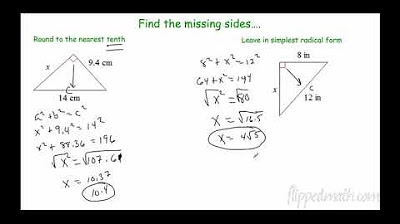Principles of the Constitution 3.1 Continued - Benchmark Civics EOC State Exam
Summary
TLDRIn this lesson, Mr. Raymond explains the core principles of the U.S. Constitution, which form the foundation of American government. These principles include popular sovereignty, limited government, separation of powers, checks and balances, and federalism. The video highlights how each principle restricts governmental power and ensures the protection of citizens' rights, emphasizing the balance between federal and state governments, as well as the distribution of power across the legislative, executive, and judicial branches. The content is designed to prepare students for state exams and provide a deeper understanding of constitutional concepts.
Takeaways
- 😀 The principles of the U.S. Constitution are fundamental concepts that guide the structure and functioning of the government.
- 😀 Limited Government means the national government only has the powers explicitly granted by the Constitution, preventing excessive power.
- 😀 Popular Sovereignty signifies that the ultimate power rests with the people, and they exercise it through voting.
- 😀 Separation of Powers divides government into three branches: Legislative (Congress), Executive (President), and Judicial (Courts), each with distinct functions.
- 😀 Checks and Balances ensures that no branch of government becomes too powerful by allowing each branch to limit the powers of the others.
- 😀 Federalism is the sharing of power between the national government and state governments, with certain powers exclusive to each level.
- 😀 The concept of limited government was shaped by the framers' fear of centralized power, drawing from their experiences under a monarchy.
- 😀 Separation of Powers is inspired by Montesquieu’s idea of dividing government functions to prevent abuse of power.
- 😀 Checks and Balances plays a key role in lawmaking; for instance, the President can veto laws passed by Congress, but Congress can override the veto with a two-thirds majority.
- 😀 Federalism is crucial for balancing powers between the national government and states, where the Constitution specifies certain exclusive powers for each.
Q & A
What are the principles of the Constitution discussed in the video?
-The principles discussed in the video are popular sovereignty, separation of powers, checks and balances, limited government, and federalism.
What is the meaning of 'limited government' as explained in the video?
-Limited government refers to the principle that the government has only the powers explicitly listed in the Constitution. This limits the potential for abuse of power, particularly by the national government.
How does popular sovereignty impact the U.S. government?
-Popular sovereignty means that the people hold the power in the government. They exercise this power through voting for representatives and leaders who act on their behalf.
What is the main concept behind 'separation of powers'?
-Separation of powers refers to the division of government into three branches—legislative, executive, and judicial. Each branch has distinct powers and responsibilities, preventing any one branch from becoming too powerful.
How do checks and balances work in the U.S. government?
-Checks and balances ensure that no branch of government becomes too powerful by allowing each branch to limit the powers of the others. For example, the president can veto bills, but Congress can override the veto.
What example of checks and balances was given in the video?
-An example given is the process of a bill becoming a law. If Congress passes a bill, it goes to the president, who can either sign it into law or veto it. If vetoed, Congress can override the veto with a two-thirds majority vote.
What is federalism and how does it divide power?
-Federalism is the system in which power is shared between the national government and state governments. Each level of government has specific powers, with some powers shared, others exclusive to either the national or state level.
What are enumerated powers, and how do they relate to limited government?
-Enumerated powers are those powers specifically listed in the Constitution for the national government. These powers help define the scope of the government's authority, supporting the principle of limited government.
Why was there a fear of a strong national government during the drafting of the Constitution?
-The framers of the Constitution feared that a strong national government could lead to the same kind of abuse of power they experienced under a monarchy. This fear influenced the creation of a government with limited powers and checks and balances.
How does the concept of federalism address the concerns of the Articles of Confederation?
-Federalism addresses the weaknesses of the Articles of Confederation by establishing a more balanced distribution of power. While the Articles gave states too much independence, the Constitution created a stronger national government with powers that were clearly defined and limited.
Outlines

Esta sección está disponible solo para usuarios con suscripción. Por favor, mejora tu plan para acceder a esta parte.
Mejorar ahoraMindmap

Esta sección está disponible solo para usuarios con suscripción. Por favor, mejora tu plan para acceder a esta parte.
Mejorar ahoraKeywords

Esta sección está disponible solo para usuarios con suscripción. Por favor, mejora tu plan para acceder a esta parte.
Mejorar ahoraHighlights

Esta sección está disponible solo para usuarios con suscripción. Por favor, mejora tu plan para acceder a esta parte.
Mejorar ahoraTranscripts

Esta sección está disponible solo para usuarios con suscripción. Por favor, mejora tu plan para acceder a esta parte.
Mejorar ahoraVer Más Videos Relacionados

English Expressions: three-word phrasal verbs

Penggunaan Simple Present Tense dan Contohnya | Kampung Inggris LC

ESL Writing - Summarizing and Paraphrasing

Mastering the Nominative Case in German: A Complete Guide! (Beginner / A1-A2) - 1080p/Full HD 🔥

Geometry – 7.1 Pythagorean Theorem and Its Converse

Symmetrical Name Monsters with Mr. Snyder

Rounding and Working with Significant Figures in Physics
5.0 / 5 (0 votes)
